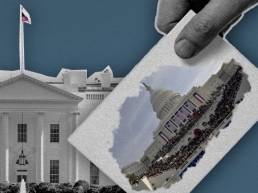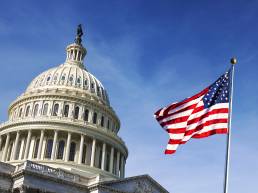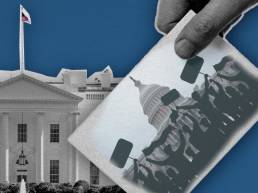Until last week, Bernie Sanders seemed to have dominated the Democratic field after a second-place finish in Iowa, very close to Pete Buttigieg, and to have won the primaries in New Hampshire and Nevada.
But Vice-President Joe Biden’s victory in South Carolina gave his campaign a boost for a strong result on Super Tuesday, in which he won 10 of the 14 states that were up for grabs. Bernie Sanders won in California, a state to which Democrats award more delegates. Currently, Joe Biden has a lead of less than 100 delegates to Bernie Sanders. It takes 1,991 delegates to get the nomination.
In a short analysis, Miguel Monjardino, Professor and Researcher at the Institute of Political Studies from Católica University, discusses what we can expect, how the race has changed in the past few weeks and why, and also examines the impact of the Coronavirus (COVID-19) on the campaign.
After the turnaround we saw on Super Tuesday, what can we expect for this Big Tuesday?
The first thing Super Tuesday has shown, or at least the polls have shown, is that there are many more people voting, but perhaps contrary to what was expected, there is an increase in moderate voters and, curiously, a decline in voters who consider themselves to be left, those that North-Americans consider very liberal. It may be happening because younger people are voting less than older voters, and we’re seeing the Afro-American population voting more, especially in the suburbs.
The Democratic primaries so far have allowed people who are not affiliated with a party to vote. Some people have stopped voting in the Republican primary because they no longer see themselves in the party and are now voting for the Democrats. There are more people voting, but these people tend to be more moderate and even conservative in the Democratic field.
It seems that, contrary to what Bernie Sanders and his supporters say, the majority of the electorate that has voted so far, do n’t look at politics like him, for the most part, it’s not an ideological fight, but the search for practical solutions to the problems that are put forth.
How did the campaign change and who came out in advantage?
This trend of the Democratic electorate seems to be favoring a more moderate ticket. That’s why Joe Biden emerges as the favorite. One of the most important States that go to the polls is Michigan, part of the so-called Rust Belt, and in which polls give a very significant margin of victory to Joe Biden.
If this trend favoring Joe Biden’s candidacy is confirmed, the Democratic Party has two options: a) An electoral race to the end as it happened between Hillary Clinton and Bernie Sanders in 2016. The dispute would go to the convention, which would be very difficult because it could divide the party a lot; b) Bernie Sanders, by himself or through his supporters, be persuaded, from the moment it is clear that Joe Biden will win, to give up his candidacy.
What can we expect from this campaign in the current context?
Judging by the experience of 2016, I don’t think Sanders will give up. But we are seeing a situation a bit similar to 2008 (the year of the Lehman Brothers bankruptcy and the beginning of the financial crisis), which is a shock in supply and demand. If this shock continues (due to COVID-19), it will have significant political consequences and the electoral campaign most certainly is going to change. All the scenarios we had for the United States election most certainly will and could change.
Related Posts
18 de January, 2021
Observador Newsletter: Why does the inauguration matter?
The importance of the new president's…
14 de January, 2021
‘América Vinte Vinte’: Trump’s second impeachment and Biden’s start
This week, Professor Teresa Botelho and…
11 de January, 2021
Observador Newsletter: How do you stop an invasion in Washington? Derrick DeMelo Interview
Analysis of the historical events that…



